We ran the 2025 Marathon des Sables, and did so with some of the lightest bags amongst the 1000 participants (even though there is no statistics for that). In this article I go through our choices and thoughts for Céline and me in order to contribute and give back to the MDS community of past and future runners.
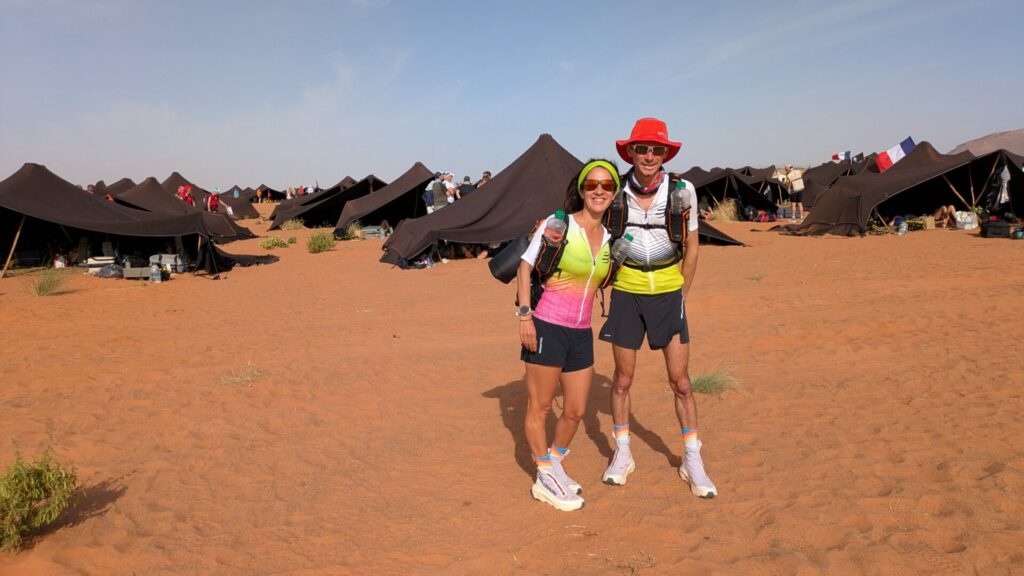
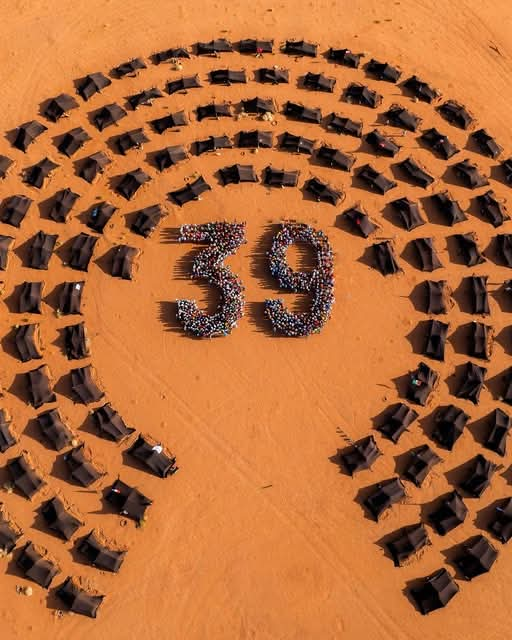
We are experienced multi-day hikers and enjoy light backpacking, so the bag challenge appealed to us. We started a few months before the race and had an Excel file (external link): it’s more fun to update when it looks good.
We had the goal to be as light as possible, firstly because we are pretty light ourselves (the 6.5kg minimum weight is above 10% of our body weight), and secondly we were ambitious enough to think of running most of the 250km.
Carrying a bit more is less of a problem for full walkers/hikers, but this process of shaving weight can also help: less tiring, less chaffing, less back-pain. Less items to manage also means a smaller mental load.
The spirit for such a bag is close to extremism. You have to be ready to shave grams off every item, challenge everything, and give-up partially (fully) on comfort. Giving up somewhere because it’s only 100gr opens the door to other concessions.
We were happy with 99% of our choices (else I mention it), were never hungry nor felt any lack of something.
If you are thinking of running this, and even more if you’re planning to compete, you are shooting yourself in the foot going with a bag above 7kg or 7.5kg. We were quite far from that.
We were both well under 6kg at the start line, with about 1.4kg of mandatory kit, 3.7kg and 3.3kg of food, 350gr and 1080gr of additional gear. Here’s how.
Race regulation
Your starting point is the race regulations, that I advise you to read and know them well, even though some points might be unclear:
https://www.marathondessables.com/regulations-and-terms-legendary
There are three main constraints that come with the regulations regarding the bag:
- mandatory equipment
See below - number of calories per day
See below - minimum weight of 6.5kg (and maximum of 15 kg . . .)
Let’s be clear even if no one mentions it, in the current state of the regulation, this constraint is inapplicable and brings no additional security value. You can go as low in weight as you want/can.
The bags are weighed on the morning of the day before the race, before the GPS-beacon is attached. You can add fruit cans and coca-cola for your first breakfast (up to you to eat them or give it to the info tent before the first start).
Mandatory equipment – 1.4kg
To be kept with you for the entire race to avoid penalties (I do hope you can use the antiseptic if necessary).
Backpack – 550gr
I can only write about the WAA bag (WAA ultra bag 20l). The Raidlight bag is lighter (330gr) but was said to be fragile (this may no longer be the case). Bags should be checked for comfort also, not only weight.
The WAA bag is comfortable, and practical with its large opening, but is too heavy (close to 700 grams), and not suitable for running, especially for small bodies. This shows especially on the belt loop with its pockets that move a lot, and which cannot be tightened completely if you’re too thin.
As a result, our adjustments for a bag close to 550gr (without bottles):
- Replace the belt pockets with a single strap with buckle
- Remove the rain blanket (just protect your sleeping bag in case of unlikely rainstorm).
- Remove the inner yellow pocket
- Remove one of the 2 chest straps (keep the one with the whistle)
- Remove all elastic lines and pulls from zippers. I had taken a piece of string to attach the bib to the back of the bag, otherwise leave four elastic lines.
- Cut all straps that are too long (re-sew or superglue the hemstitch to avoid losing the loops).
- It is possible to remove the grey foam in the back (40 gram): I had doubts about the structure of the bag but some people did it. We kept it, cf. why? in the optional part.
- Of course, do not take the extra front pack
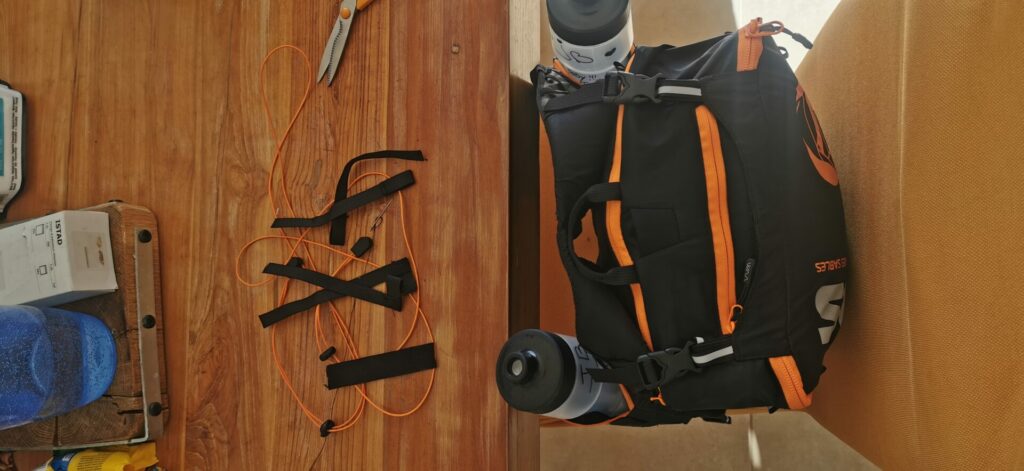
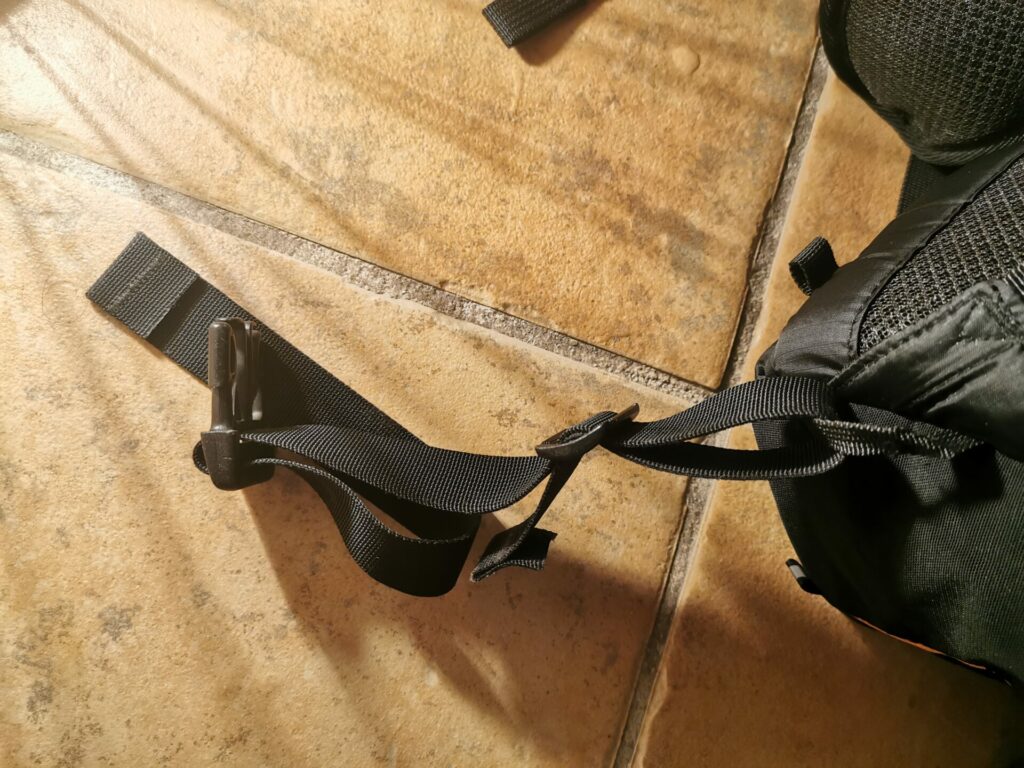
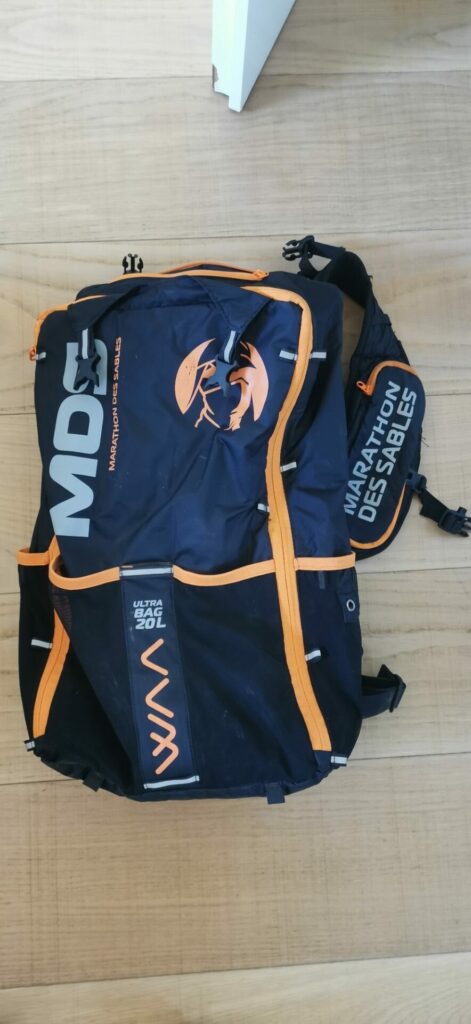
Water capacity of 1.5l minimum – 85gr
The bottle straws of the WAA bag aren’t great. Proper straws are convenient for drinking, but it’s really a no-go for us to have them non-stop in the field of vision. It also remains a fragile element.
We had chosen Van Rysel 800ml bike bottle Decathlon, 180gr for both.
Eventually we changed that 24 hours before departure for Joker juice 1L plastic bottles. The rectangular format is practical (it pushes less on the ribs), the cap is quite wide (to add powder and fill water at CPs), it fits perfectly into the bag chest pockets, and most important it is 85gr for both!
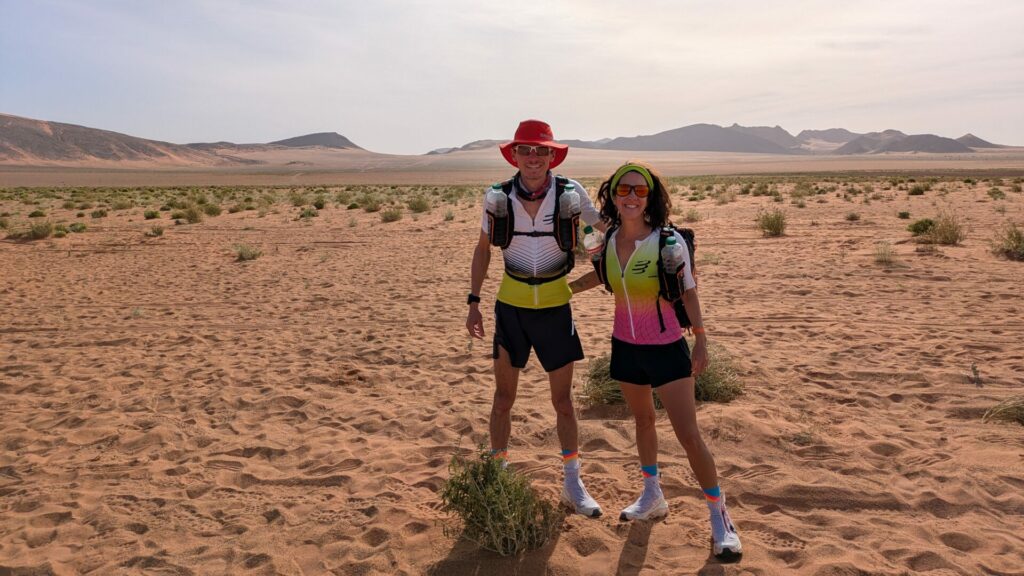
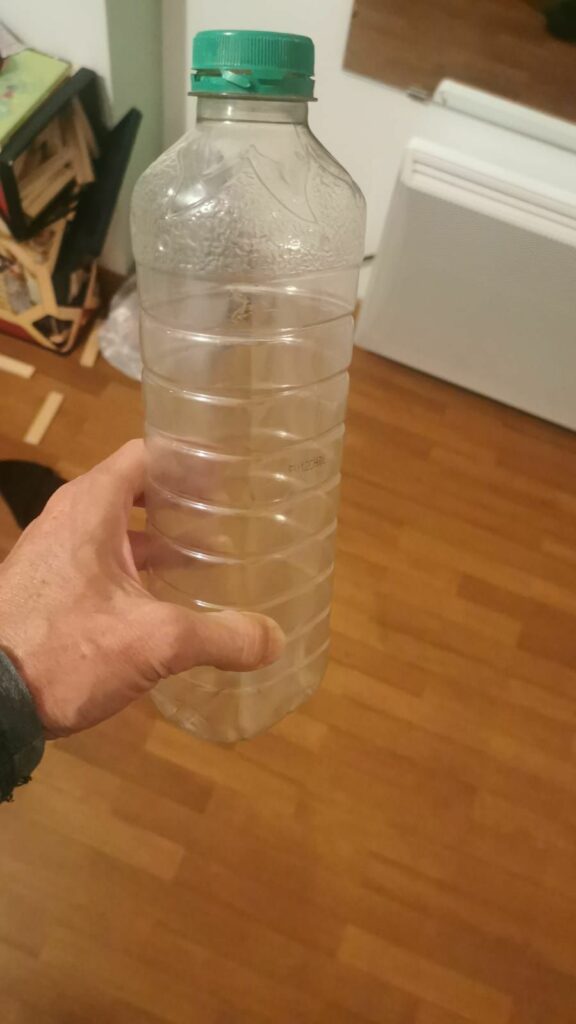
You can find lighter bottles, at the expense of rigidity. Or even do like the Moroccan elite runners with a single 1.5l water bottle, but you need a suitable bag system (they all have a front bag securely tightened with the bottle fitting horizontally), and the cap is not very practical.
Sleeping bag – 315gr
We’ve been using a variety of Cumulus sleeping bags when hiking. The Cumulus Aerial 180 is perfect for MDS conditions. They boast a 5 degrees (Celsius) comfort temperature: I’m pretty skeptical regarding that, or maybe with a very well insulated mattress, but it’s enough for MDS. The Aerial 180 is all about optimizing weight: no hood, no zipper, no down on the back.
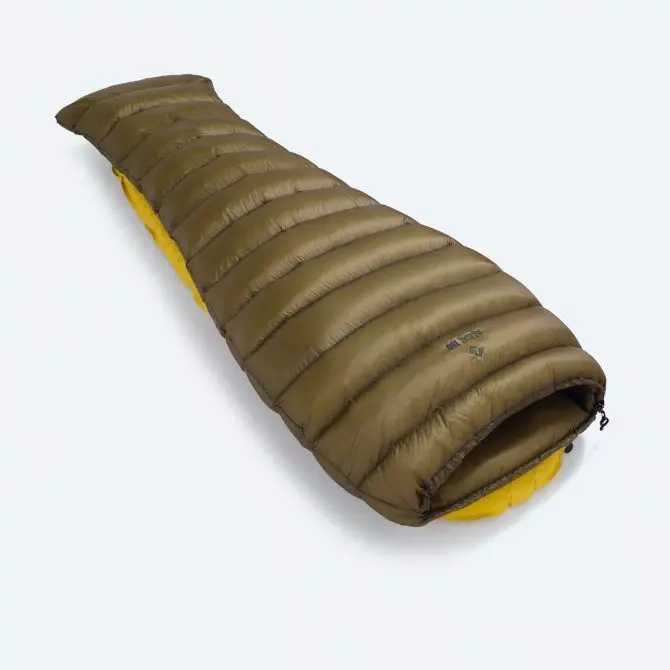
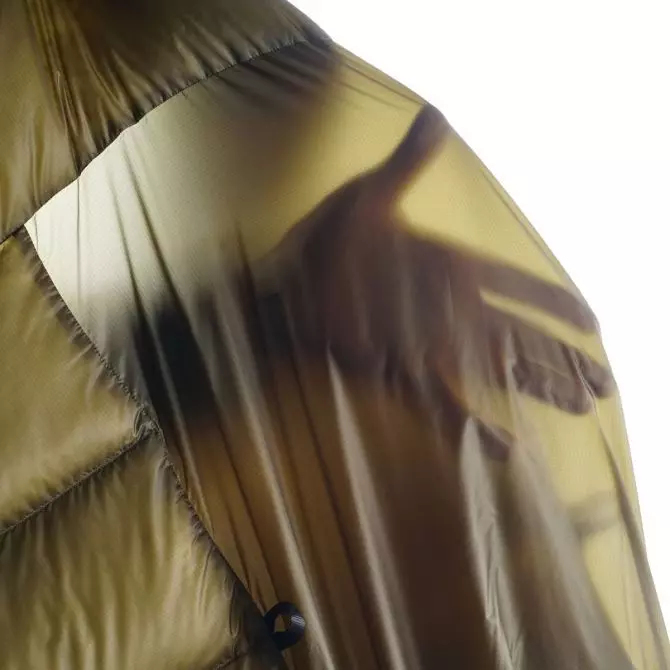
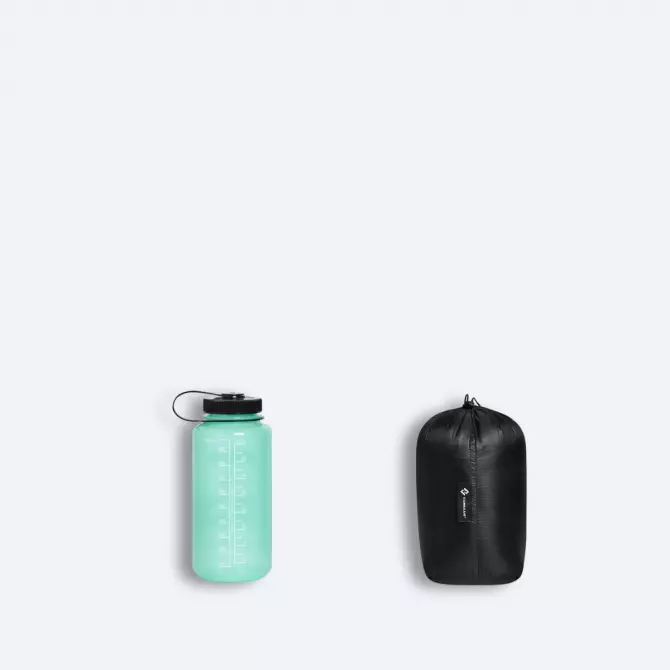
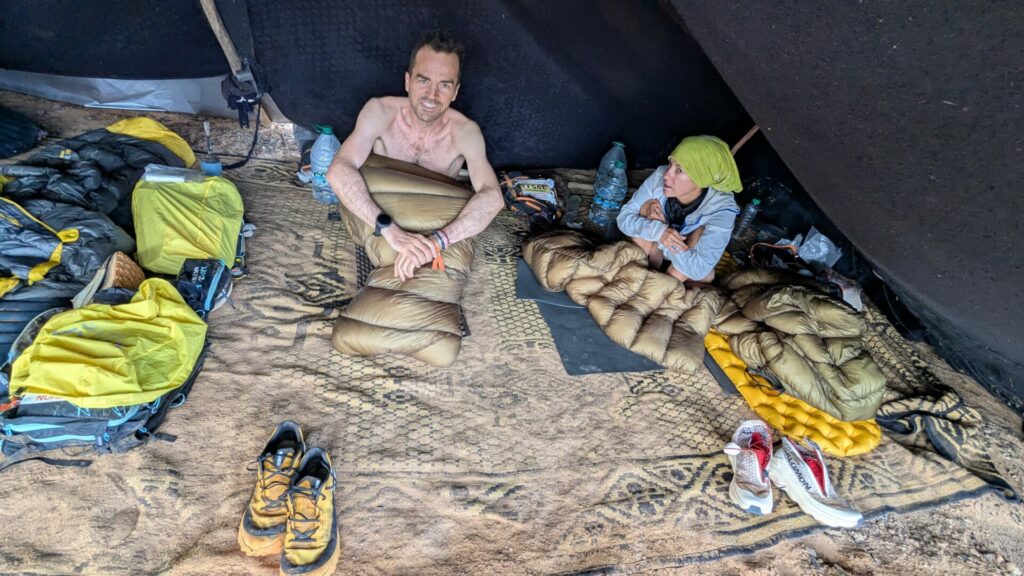
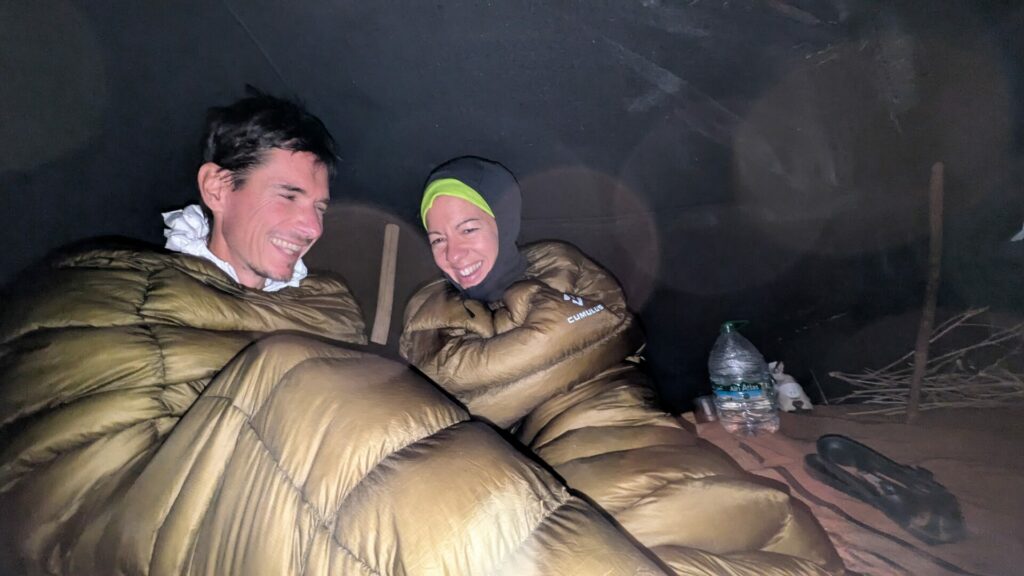
Head torch + batteries – 70gr (Céline 116gr)
I went with 2 old Nitecore NU25 at 35gr each, on which we had replaced the band with an elastic thread (the Petzl e-lite which I considered as backup torch does not comply with the regulation as it has less than 200 lumens).
Celine went with a 40gr Nitecore NU25 UL, plus an external battery: 18650 battery at 45gr, battery-shell at 21gr and a small USB-C cable to charge it. She used it also for her watch and her Ipod. If you do not need a battery, just take two light lamps.
10 safety pins – 6gr
Not much to be said. We took 12 each in case of loss.
You need 4 to attach the front bib. The others remain in the bag. Some take a few large ones to secure drying clothes on the tent.
Compass with 1° or 2° precision – 22gr
Basic orientation compass that we already had. I just shortened one of them to align both weights. It’s likely possible to find a lighter one.
Lighter – 11gr
Clipper for us (else Bic mini)
Whistle – 0gr
Included with the bag
Knife with metal blade – 6gr
Key Unity KK06: More satisfactory to hold than the Opinel No. 2 (Opinel is probably very French). Good at opening vacuum bags and there’s barely no other usage for it.
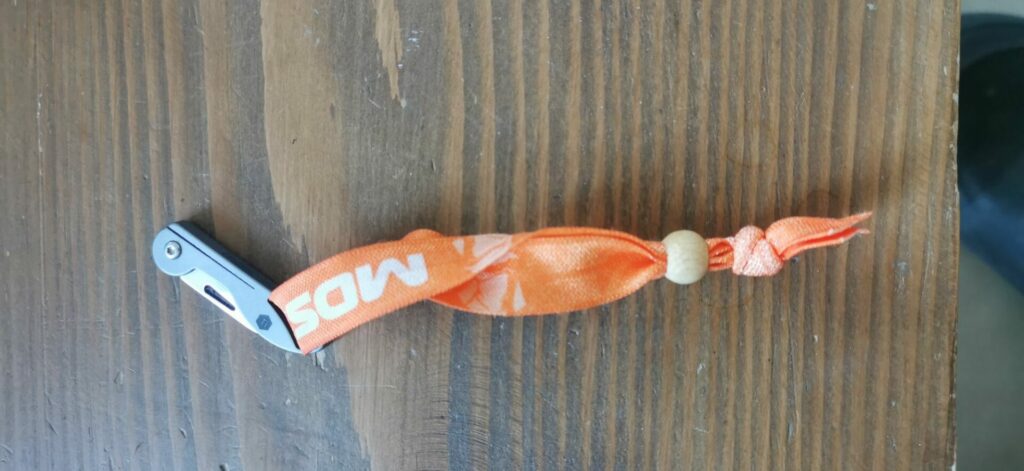
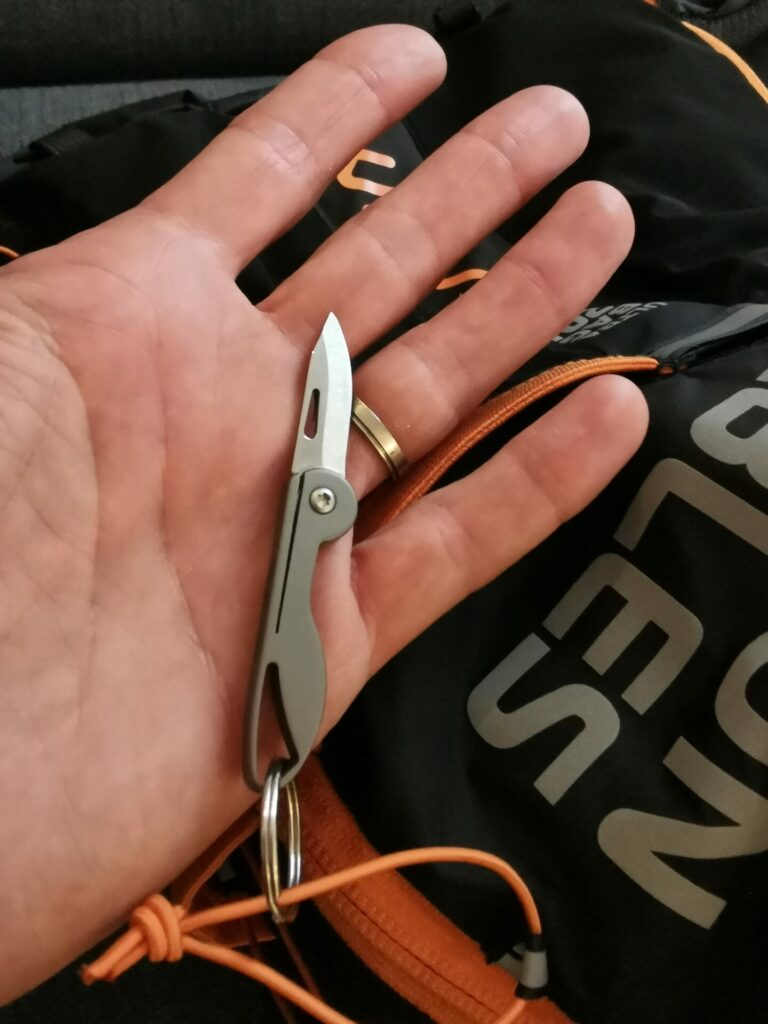
Topical disinfectant – 16gr
We went with an antiseptic towelette, and 2 mini Eosine bottles each. The towelette is actually enough: for Eosine there is everything you need at the camp medical centre.
Signalling mirror – 0gr
We were proud of that one: a mirror sticker on the back of the compass, and that’s it. We’ve tested and even though it’s not a perfect mirror to admire yourself, it reflects sunlight very well.
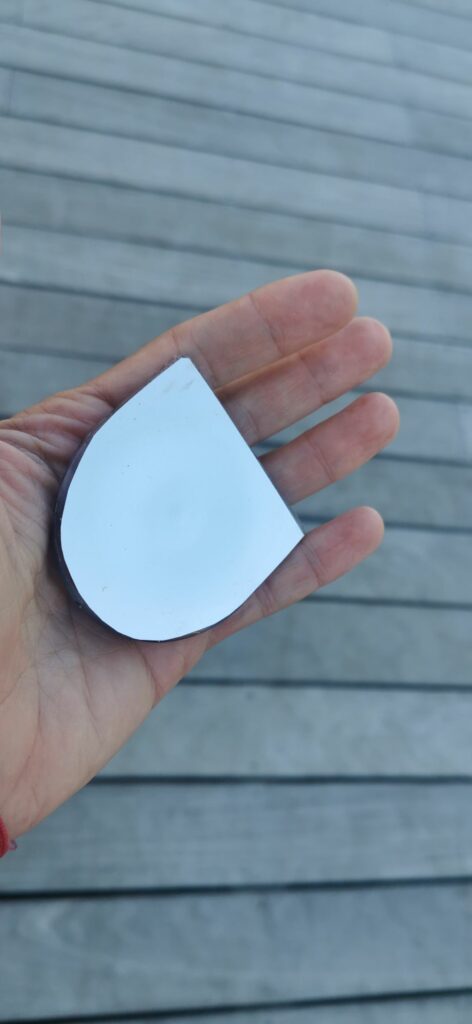
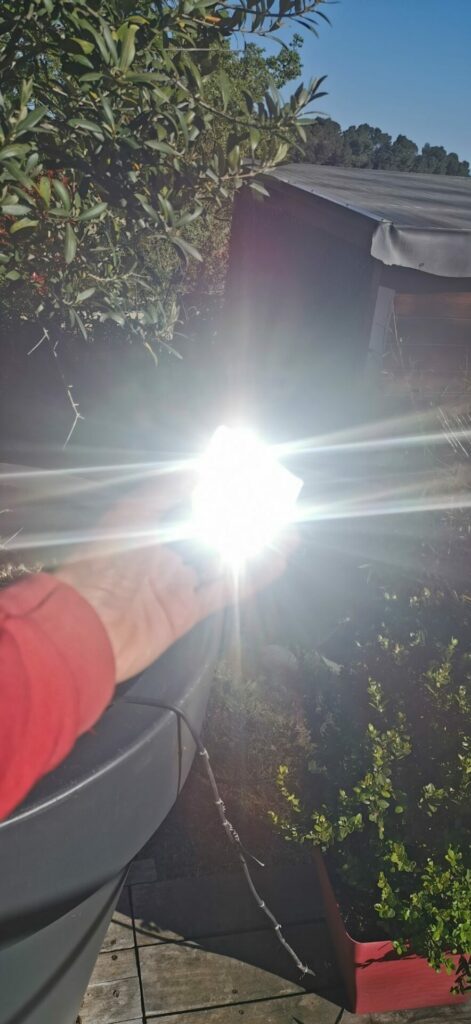
Aluminium survival sheet – 37gr
We had them at home. Can’t remember where they came from, others easily go for 50 grams or more.
“Knorr” type cubes (2 per day) – ~100gr
It’s one of the only things that we would change, and that we changed by day one.
We had chosen Kub’Or ones because in a package, there are 2 cubes, so we can have 14 cubes for about 50 grams. I had just planned to put them in my (unsalted) home-made meals, and we were skeptical about drinking that with water while running, so two a day was enough.
It did not take me long to change my mind, I had no issue drinking them mixed with water, and it did not leave grease in the bottles. I was able to recover some on the first and third days from tent-mates who had too many (same for Céline even if she can’t drink it like that).
Tube of sun cream of 50ml minimum – 60gr
Avène ultra-light fluide.
Celine weighed all the sunscreens in the pharmacy with her friend. At 60gr for 50cl, it seems overkill to me to recondition in a lighter container. You may empty some of it (or use it on previous days) depending on how much time you anticipate to spend in the sun. With the new starting hours since 2024, only the long stage requires re-applying once for runners. Add arm-sleeves and a hat, and you won’t need much of it.
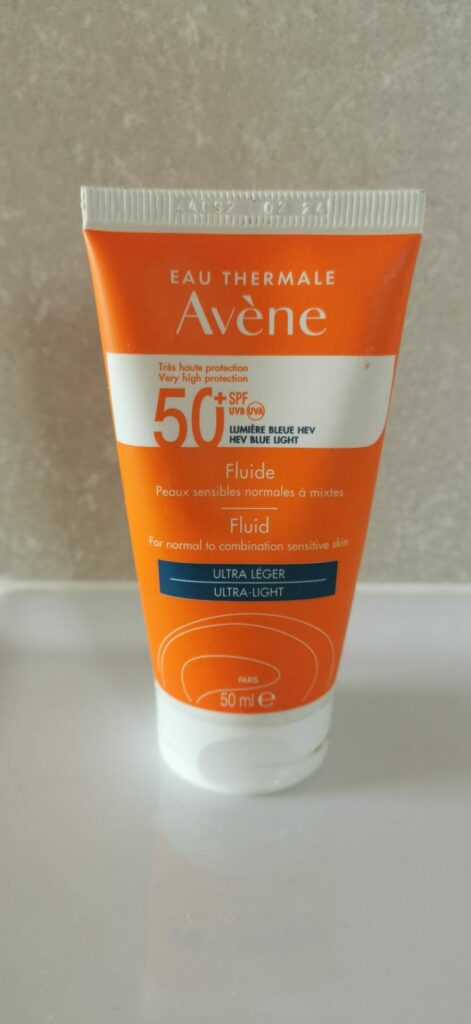
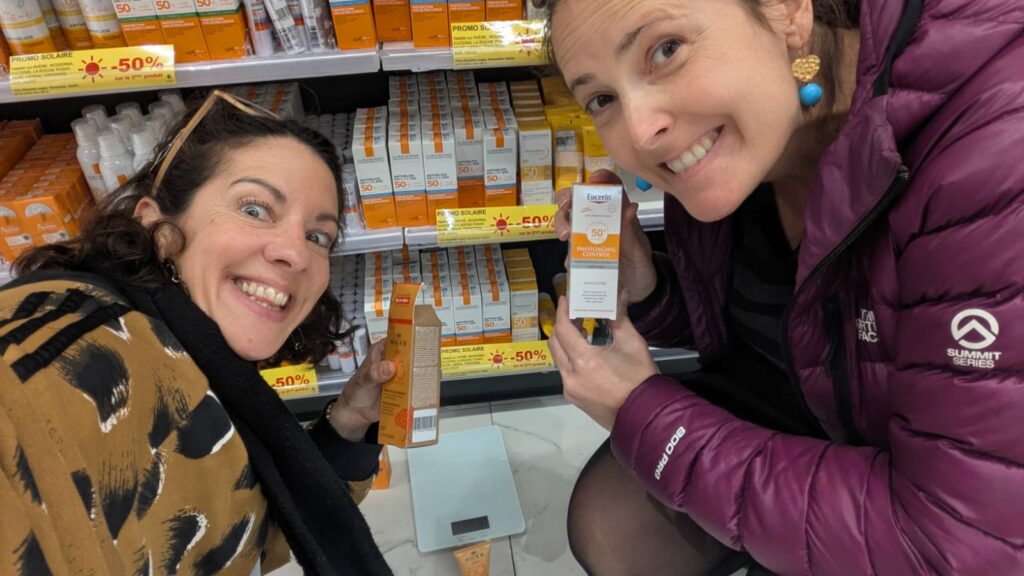
200 euros – 5gr
NSTR
Passport – 32gr
NSTR
Roadbook – 90gr
Provided by the MDS team
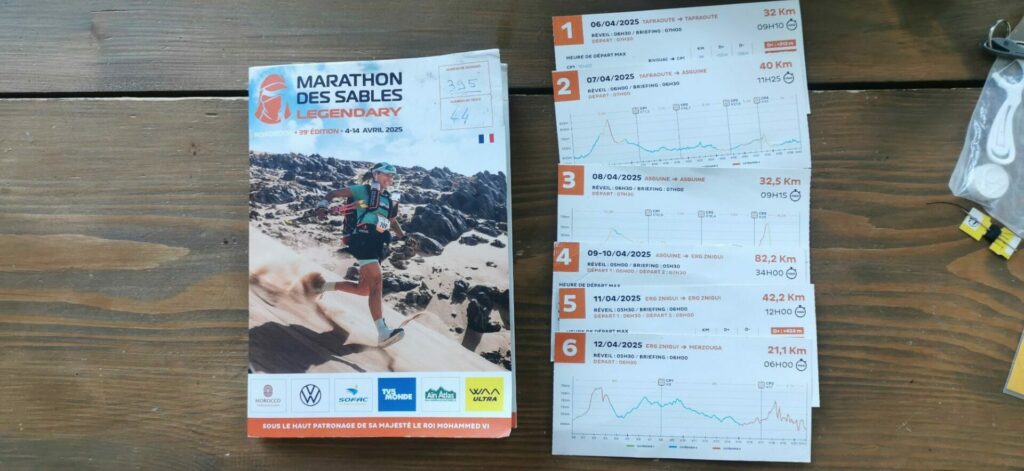
Food – 3.7kg (Céline 3.3kg)
You are required to have a minimum of 2000kcal per day. This should be about 500gr per day.
These 2000kcal are no longer necessary for the last day (at least in 2025), even if the organization still needs to align this change everywhere… It’s up to you to know if you need 2h or 5h for the last stage and plan accordingly. After the finish line, you don’t need anything.
2000kcal, that’s really the bare minimum. Even for us who are quite small/thin, it seems ambitious. We took a bit more, without excess, and were never hungry during the week.
Some say that many participants take too much food and will distribute it. This probably depends highly from one tent to another, and we haven’t really seen it in sufficient quantities to prove this.
You need a good ratio of carbs/fat/protein, and also need to optimize the weight/calories ratio. We’ve never looked so much at calories per 100gr information on food labels. 500kcal for 100gr is a good target for individual items, and you should target an average on the whole food package above 400kcal per 100 gram.
Most dry nuts (peanuts, …) exceed 600 (take them salty), some such as macadamia nuts, pine nuts and others are above 700.
Dehydrated butter reaches 750kcal to 100gr and that’s the maximum I’ve been able to find.
We weighed individual quantities with the bags (freezer or vacuum bags). For example, my 50gr of energy drink mix includes the bag weight.
We repackaged and vacuumed all dehydrated meals. Repackaging saves 10 to 15 grams per meal. Vacuuming allows you to fit everything in the bag.
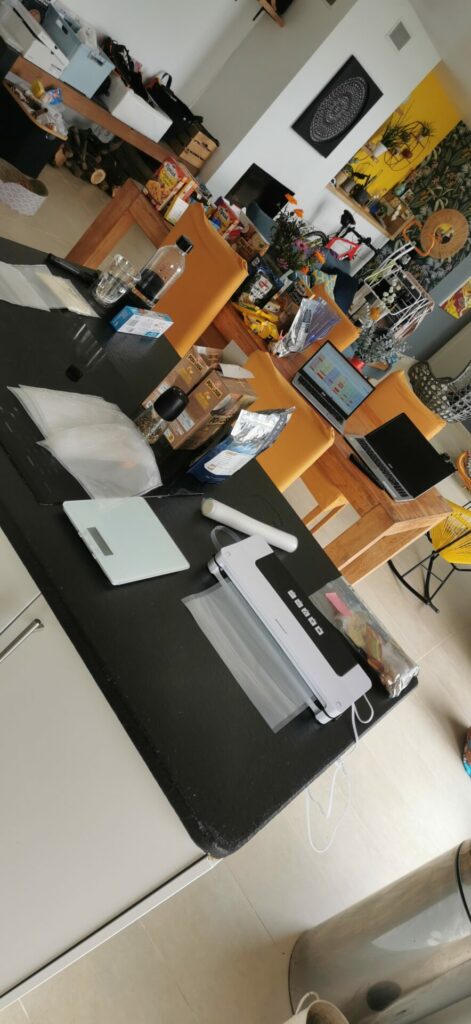
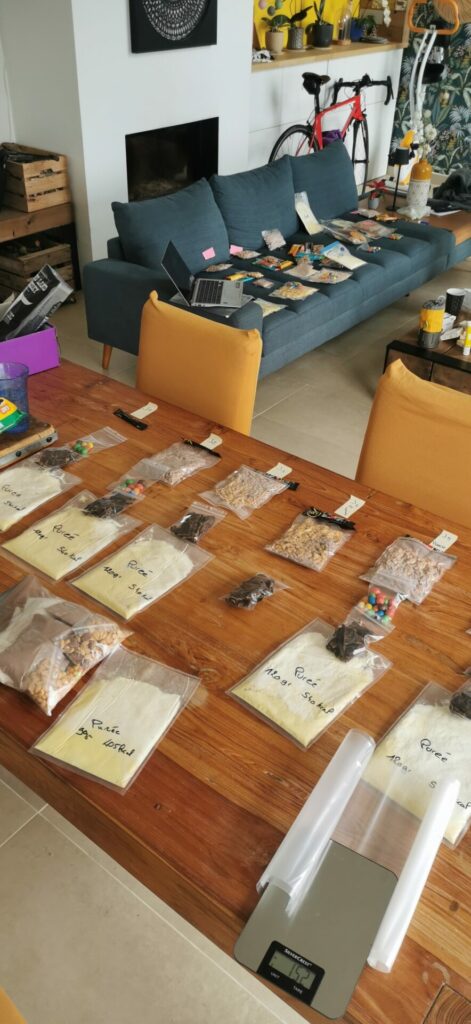

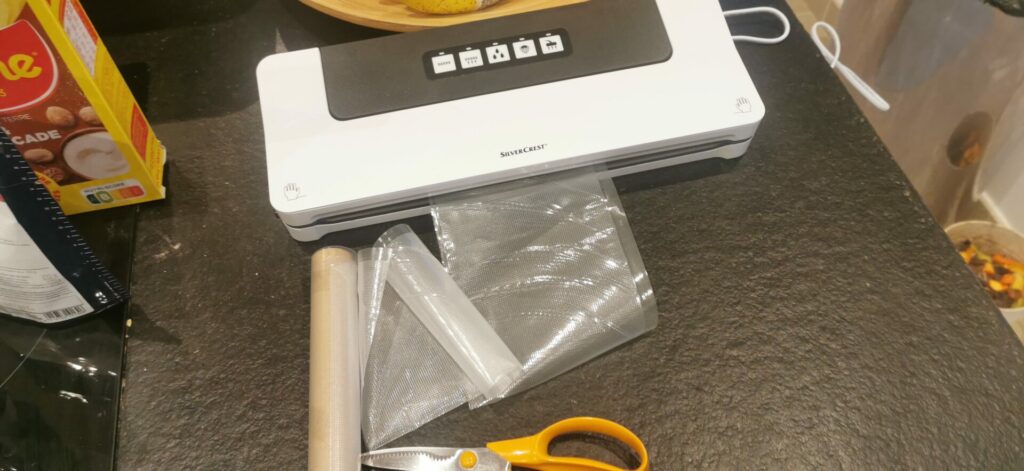
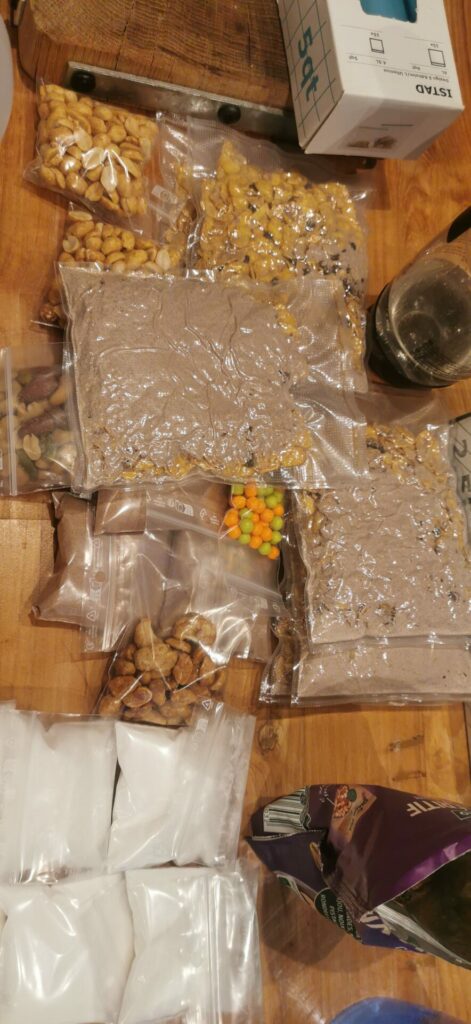
We then made one vacuum bag per “racing-day”, so that we had everything in closed bags during each race (except for the first day, in order to to fill the holes in a fully packed bag).
So, in every vacuum bag to be opened after each stage at the tent: midday meal, snacking, evening meal, then breakfast, food for the race, and recovery mix for the next day.
The following weights (3.7 kg and 3.3 kg) do not take into account breakfast on the first day. This one allows you to reach 6.5 kg (see above). You won’t carry it, so make it a point to boost your calorie intake and eat something that you like.
We added last minute some 20gr of Tic-Tac mints each for the whole week.
Food for JB – ~3.7kg
I took 2650kcal per day, close to 3000kcal for the long stage day, and about 2000 for the rest day. I have the same food every day. Meals are good and easy to prepare regardless of water temperature. They’re unsalted because I’ll add a Knorr type cube.
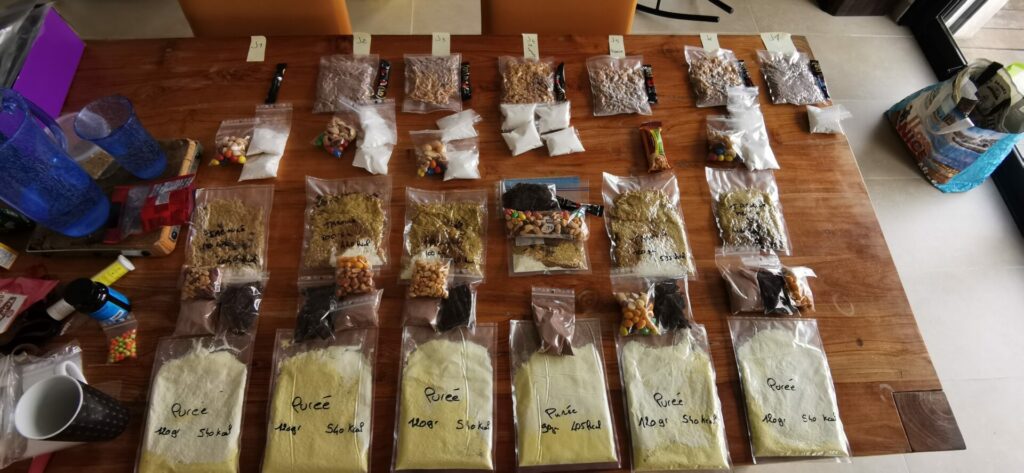
- breakfast: dehydrated Muesli from Voyager brand (optional coffee stick for ensuring toilet break before each stage)
- race-time: 2x50gr (367kcal) of Decathlon Isotonic powder, 60gr of nuts and MMs, 1 or 2 electrolyte tabs and 1 or 2 Knorr-type cubes from mandatory gear (quantities x2 for the long stage with 50gr of dried meat and a small couscous of 50gr in case things get ugly).
- recovery: 64gr of Decathlon chocolate mix
- lunch: homemade couscous (100gr / 440kcal) boosted with nuts and dehydrated butter.
- snacking: 50gr of nuts and 35gr of dried meat (very dry so it takes time to chew).
- dinner: snowflake potatoes (120gr / 540 kcal) improved with milk and dehydrated butter, with remaining dried meat. Tic-tacs and the remaining nuts/MMs for dessert.
Food for Céline – ~3.3kg
Céline took 2200 to 2400kcal par jour, and almost 2700 for the long stage.
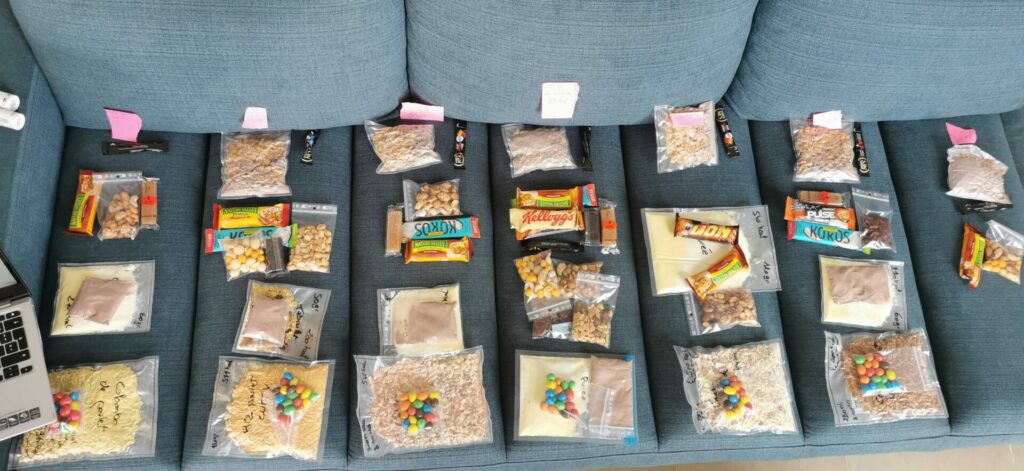
- breakfast: Dehydrated Muesli from Voyager brand (Mandatory coffee stick to start the day, MDS or not)
- race-time: nuts, bars, (quantity x2 plus 100gr of snowflake potatoes meal for the long stage)
- recovery: 40 of Decathlon chocolate mix
- lunch: snowflake potatoes or couscous (60gr / 270kcal)
- snacking: mini-dry-sausages (she would have liked more of them in-race since she had issues taking other foods)
- dinner: different dehydrated meals (130 grams per 550 kcal on average). MMs for dessert.
Optional gear – 350gr (Céline 1080gr)
This is where some people lose the battle, but where you can also make a big difference.
Sleeping mat- 0gr (Céline 370gr)
Céline chooses to ensure good nights with a Sea to Summit Ultra Light inflatable mattress (that we already use for backpacking).
For my part, I took nothing. Almost… With equal weight (40gr) and size, I replaced the foam in the back of the WAA bag with 3mm EVA foam folded 4 times (therefore included in the weight of the bag). It makes for a very thin mattress (and even somehow a seat when folded in 4 and then again in 2), and it’s quite nice to have a clean area (just flip it over) when the tent rug is full of sand.
Same weight as the default foam, so it also works for Céline to offer a small puncture protection for her inflatable mattress.
The experienced hikers will identify a smaller and cheaper version of the Gossamer Gear Thinlight Foam Pad.
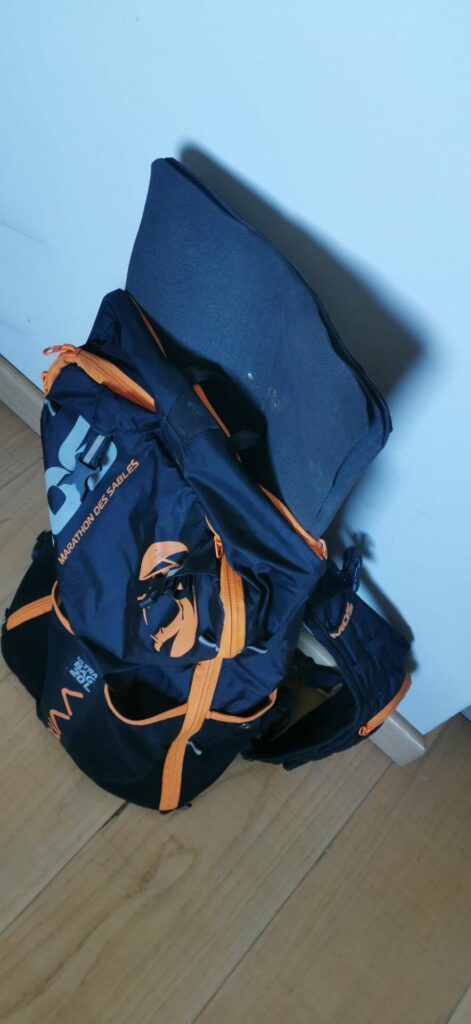
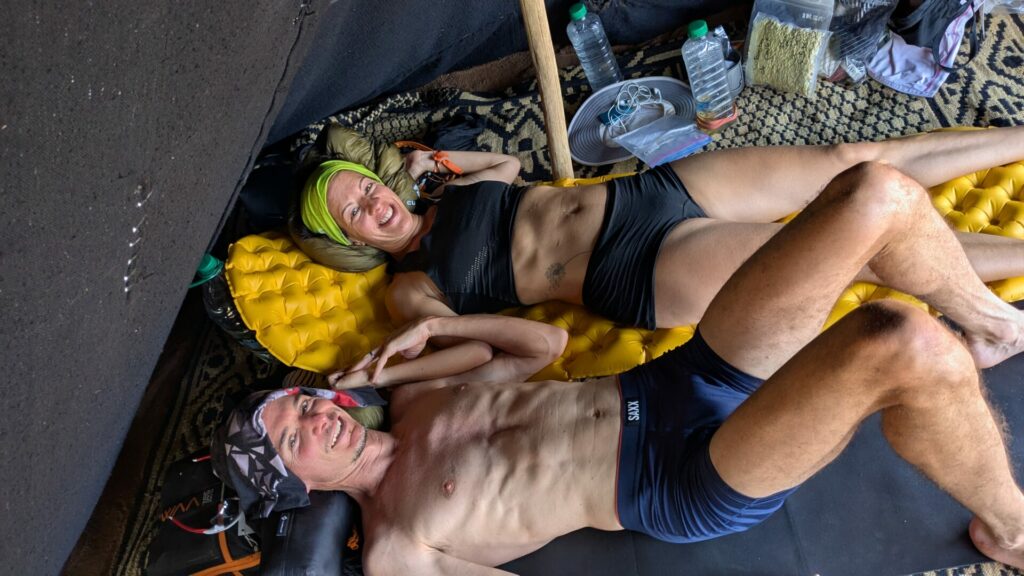
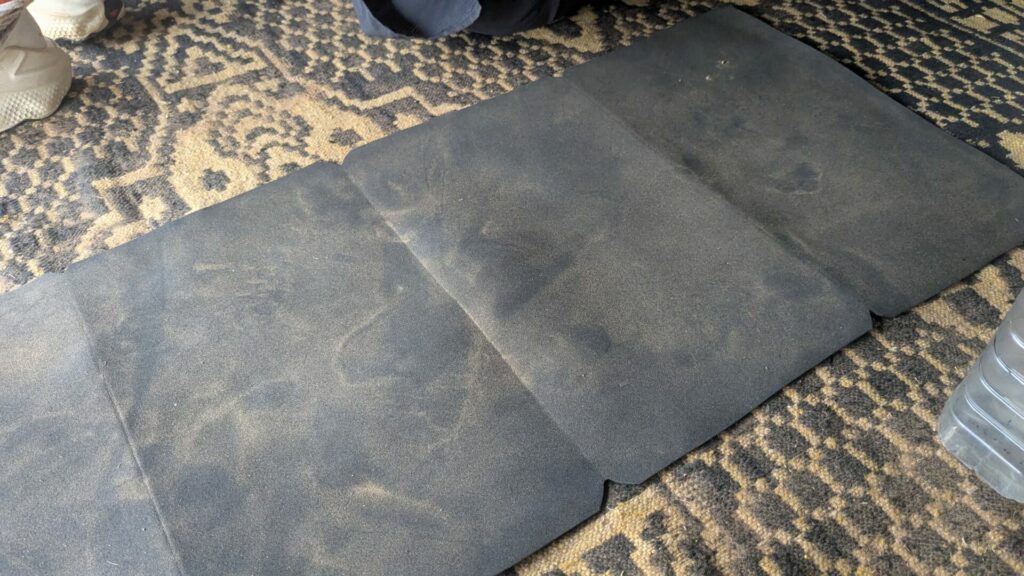
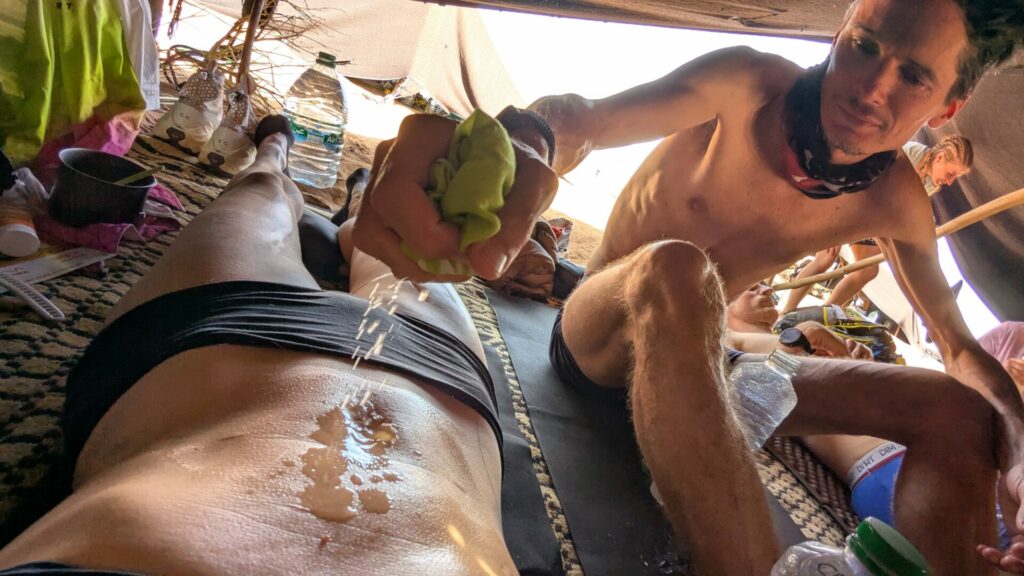
Of course this means proper cleaning of rocks under the tent rug. It’s even better now that we stay two nights on each bivouac. Thanks Axel ;).
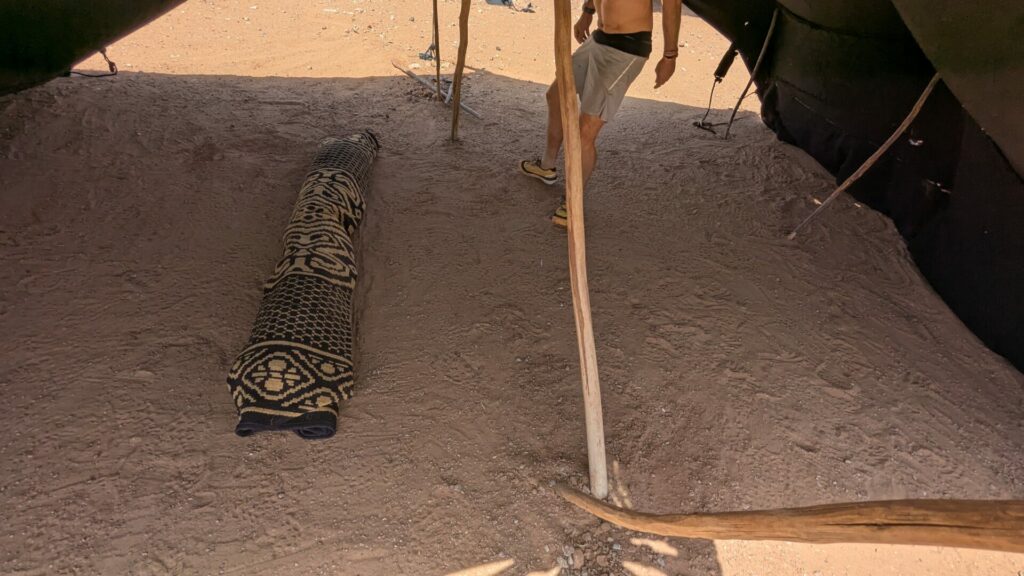
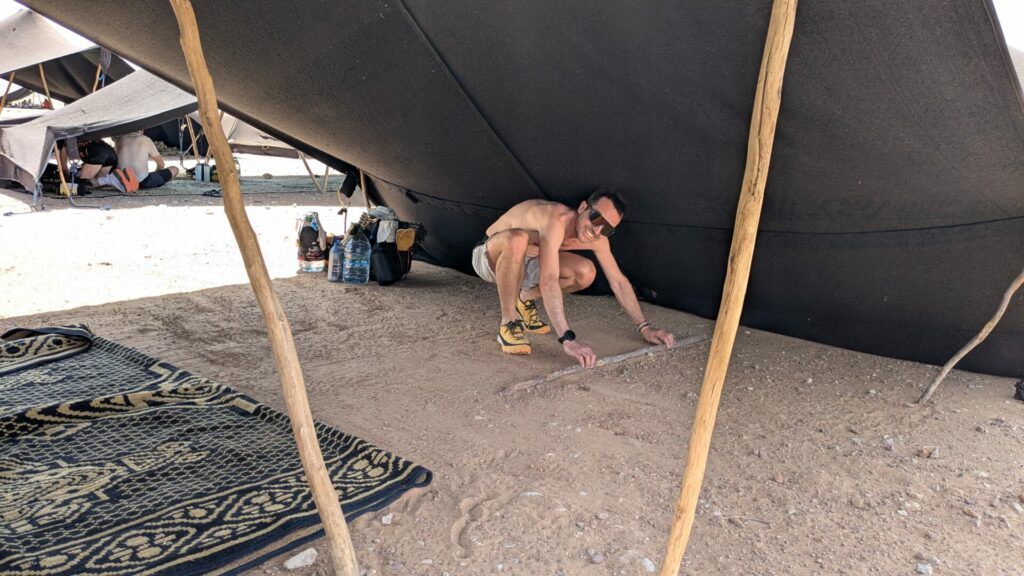
Ear plugs – 5gr
With an extra pair.
8 of us in each tent, with our neighbour tents in front, back and on both sides: snorers guaranteed.
We did not overthink it much for 5gr 😉
Pot- 0gr (Céline 50gr)
Celine takes a Toaks titanium 550ml (without the 10gr lid). She could have done without. Water left in a bottle in the sun is warm enough for all dehydrated meals (home-made or not).
No fire so no fire-starters. Else you can agree with your tent-mates to carry one each.
No stove or pot support either: get 3 pebbles or just put directly your pot on the fire if you have one.
Spoon – 10gr
I loved our Sporks Titanium from Light My Fire but it’s 19gr (else the original but more fragile plastic model is 9gr and cheap).
We used Plastic spoons from the kitchen cupboard (10gr).
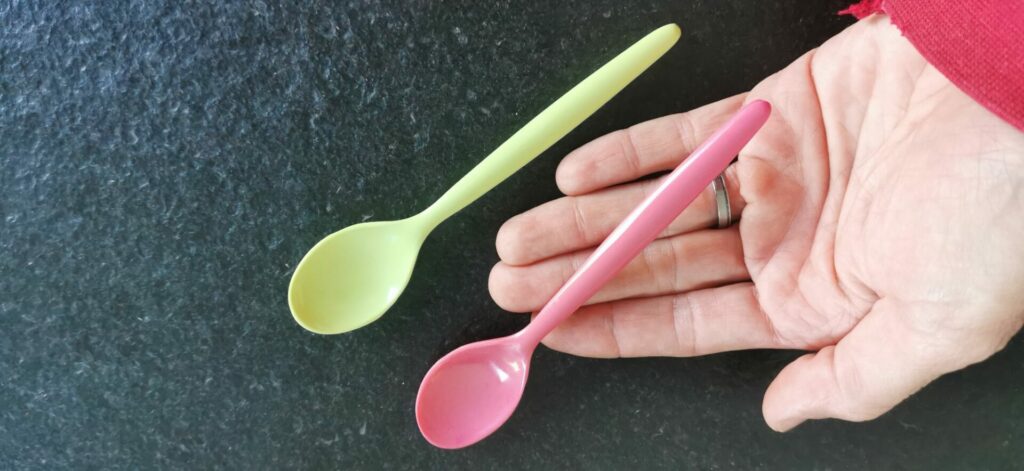
Flipflops / bivouac slippers
70gr for Ikea hotel slippers, so we’ll skip that. Lighter ones would likely be too fragile.
Our running shoes, with a pair of thin socks or the blue slippers from the medical tent, will be enough for the limited time spent walking on the camp (you may remove the inner soles).
Phone – 185gr (1 for 2, but mostly for Céline ;))
We took one for the both of us, just for photos (I only carried it for one day :D). We almost didn’t take any photos during the race. Still, it’s nice to have pictures of the bivouac where we spend quite some time. You may think of borrowing the ones from you tent-mates that won’t even think of going without (most of them). Otherwise the lightest Gopro weighs 86gr.
Music and cables – 0gr (Céline 41gr)
Céline wants music if she’s running alone. She takes an old Ipod of 31gr to ensure things will work.
She takes mini-adapters to charge it and to charge the watch, these things go at the end of the USB-C cable (part of Mandatory gear with the battery).
After the race we learnt that you can put mp3 directly on the watch and avoid any sync. issue between Deezer and the watch. Maybe she’d just go with her Shokz headphones next time.
As for me, no need to charge the watch with the Garmin Enduro 3 (still at 60% after 7 days).
Some would put their solar watches in full sun on the bivouac. Starting from the Solar Fenix 7 and using the correct autonomy mode, it should be possible to last the 7 days (also depending on the time spent running/walking).
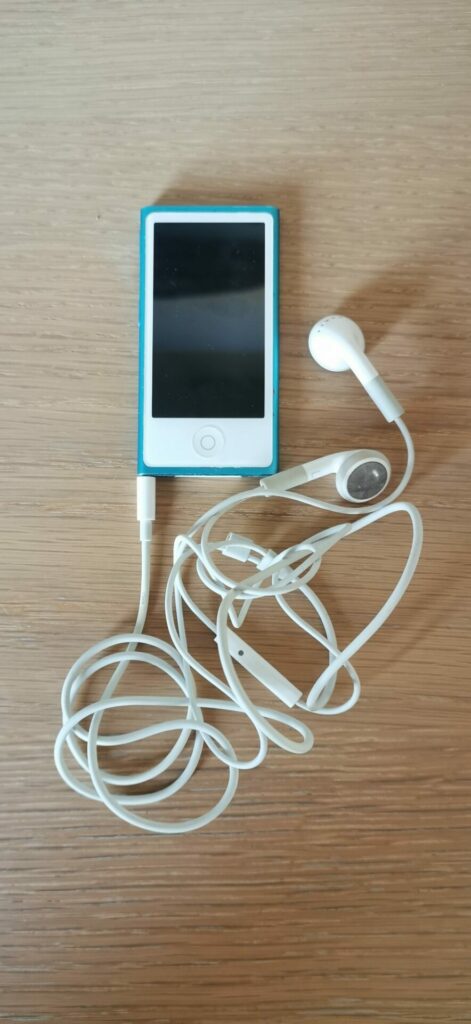
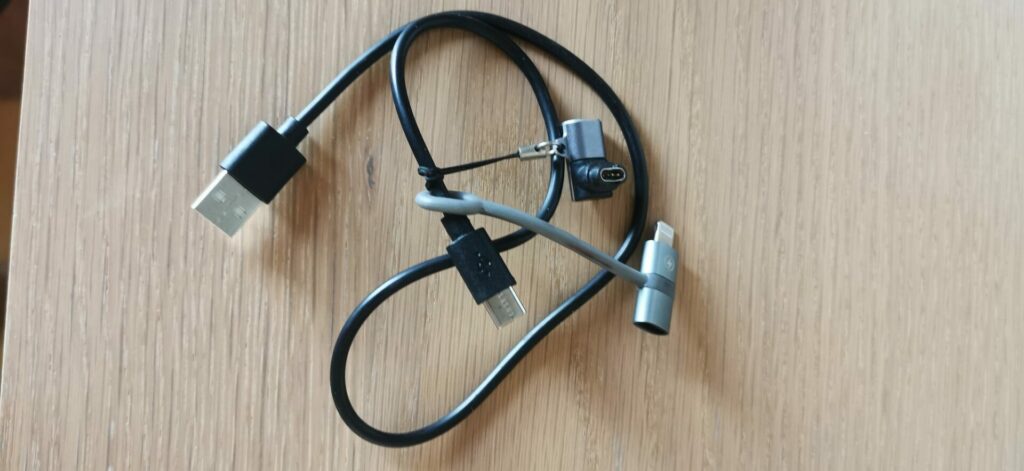
Hygiene – ~110gr
- Toothbrush – 9gr: bamboo, shortened of course (almost more for size than weight)
- Toothpaste – 5gr: 13 solid pill
- Dental floss – 2gr
- Hydroalcoholic gel – 22 gram: useless. There’s plenty at bivouac toilet (and probably at CPs)
- Soap – 10gr: just one small piece just in case
- Wipes – 17gr: one Océale dehydrated wipe per day for basic cleanup on evenings
- Toilet paper – 40gr: organic roll without cardboard. Going with a single roll could have been problematic in case of intestinal issues, we had little left on the last day. Our friend Axel had even anticipated and cut a micro-fibre towel into small parts. Consider taking 2 rolls, or a few tissues or extra wipes.
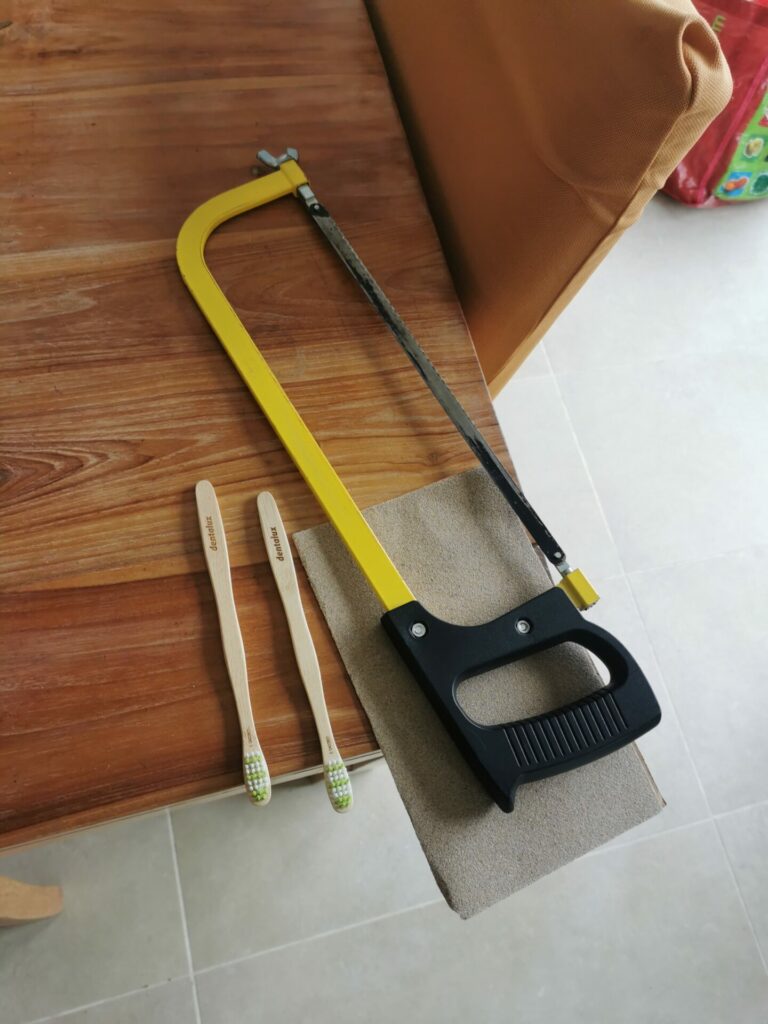
Medical kit – ~70gr
- Paracetamol – 17gr : doliprane for muscle pain and potential headache if dehydrated (a bit too much)
- Imodium and Smecta – 10gr: just in case…
- Sun lipstick – 11gr: more plastic than cream here, but for a few grams we did not recondition.
- Cotton swabs – 2gr: unnecessary (was to apply Eosine)
- Sleeping pills– 3gr: Lexomil but Zolpidem might be better. Beware of race regulation which prohibit “Narcotics including codein, dermorphin (and its analogs), hydrocodone and tramadol”. Check all drugs on your national anti-doping website (ALFD for France).
- Sterile pad – 4gr: useless
- Small scissors – 4gr: one pair for the both of us
- Tweezers – 4gr: one for the both of us
- Elastoplast – 20gr: pre-cut in strips. 20gr is too much.
Repair kit – 12gr for the 2 of us
Do not skip this. I punctured a gaiter on barbed wire on the fourth day. A little glue was enough for me, but some people needed to sew bigger holes.
- inflatable mattress repair patches
- superglue
- thread and needle
- electrician’s tape (not the full roll, just 50 to 80cm re-rolled on itself)
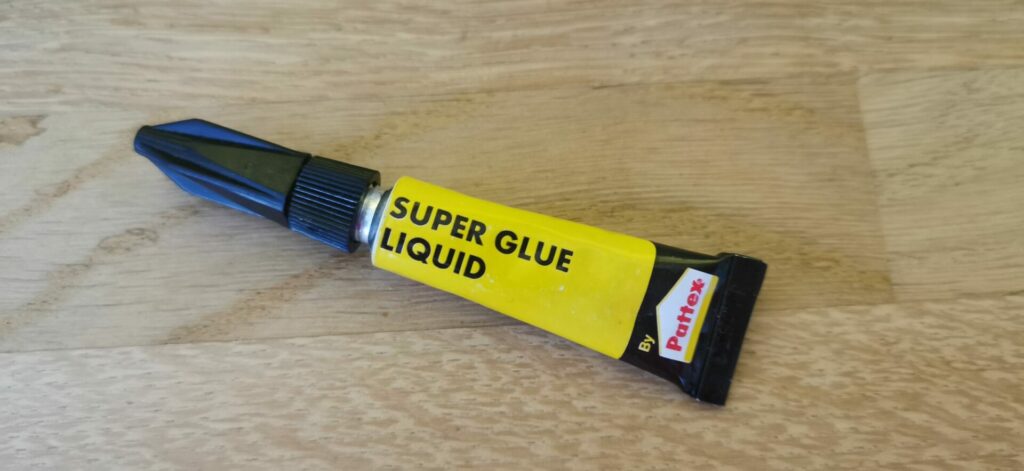
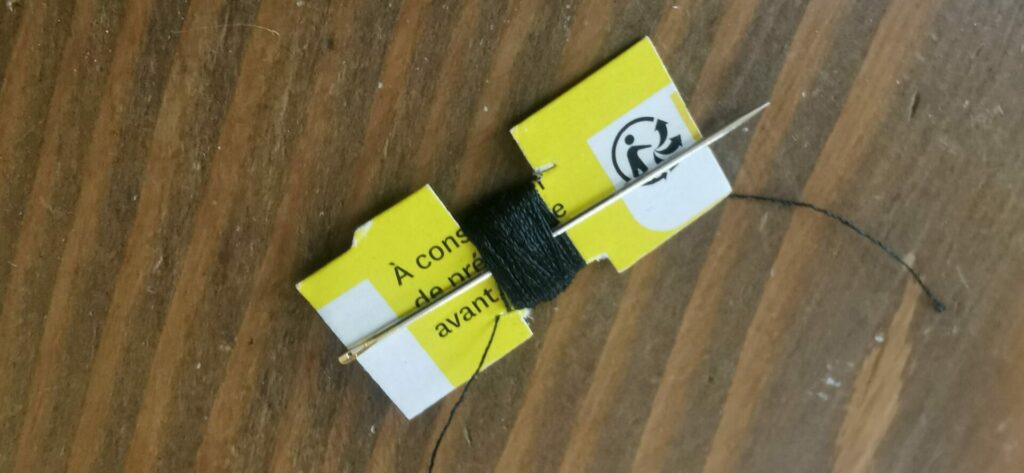
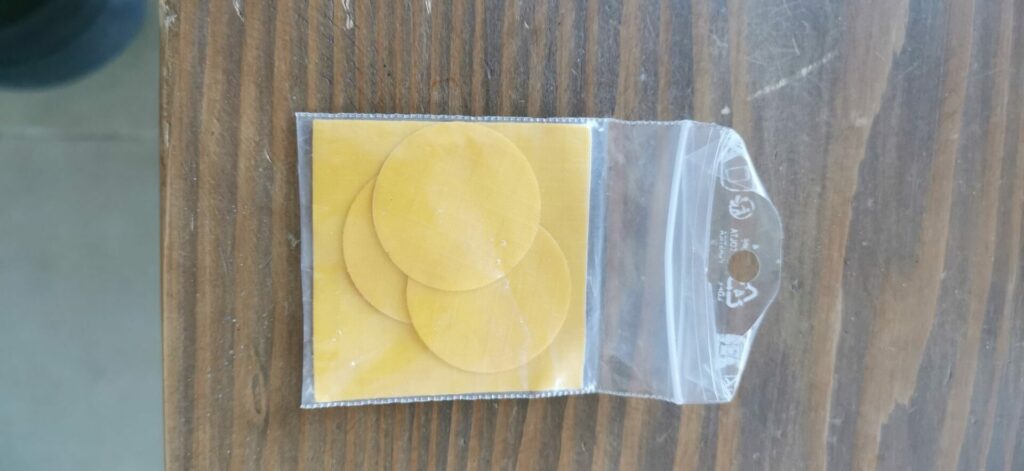
Bivouac clothes – 150gr (Céline 156gr)
I’m quite happy with my Tyvek’s pain overalls. 130gr is almost unbeatable, and for less than 10 euros. Raidlight sells something similar (in two pieces) but it’s heavier and more expensive.
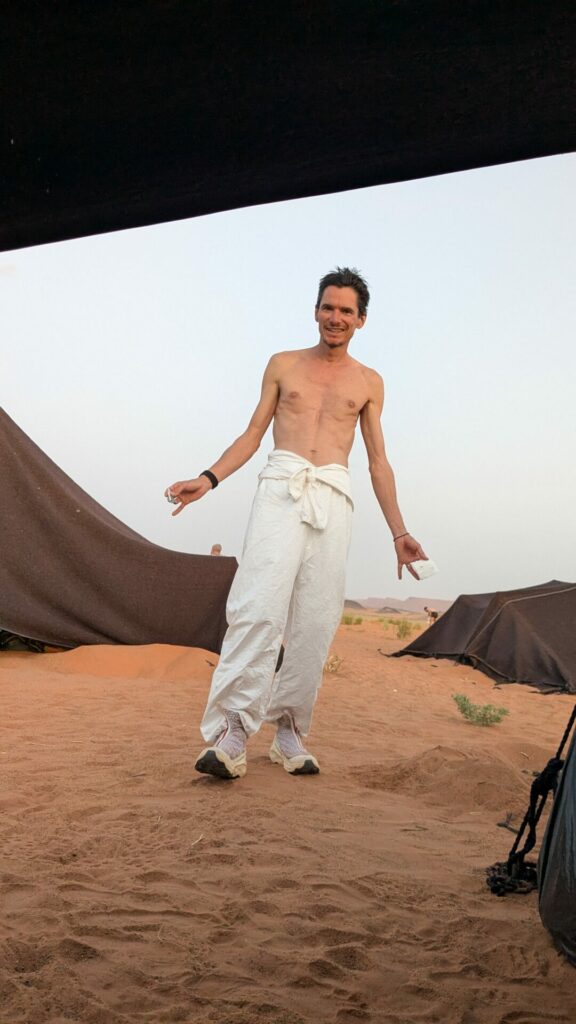
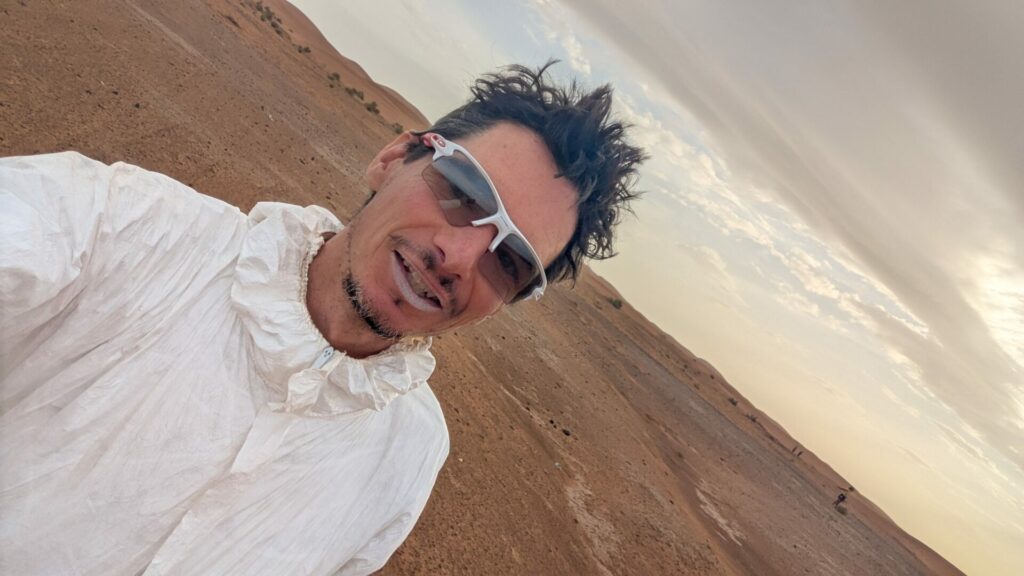
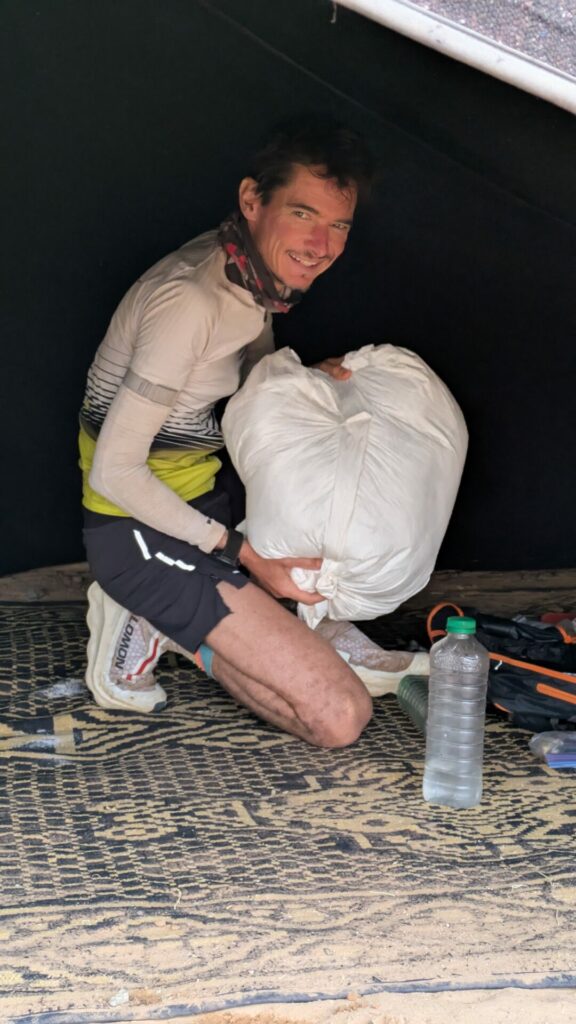
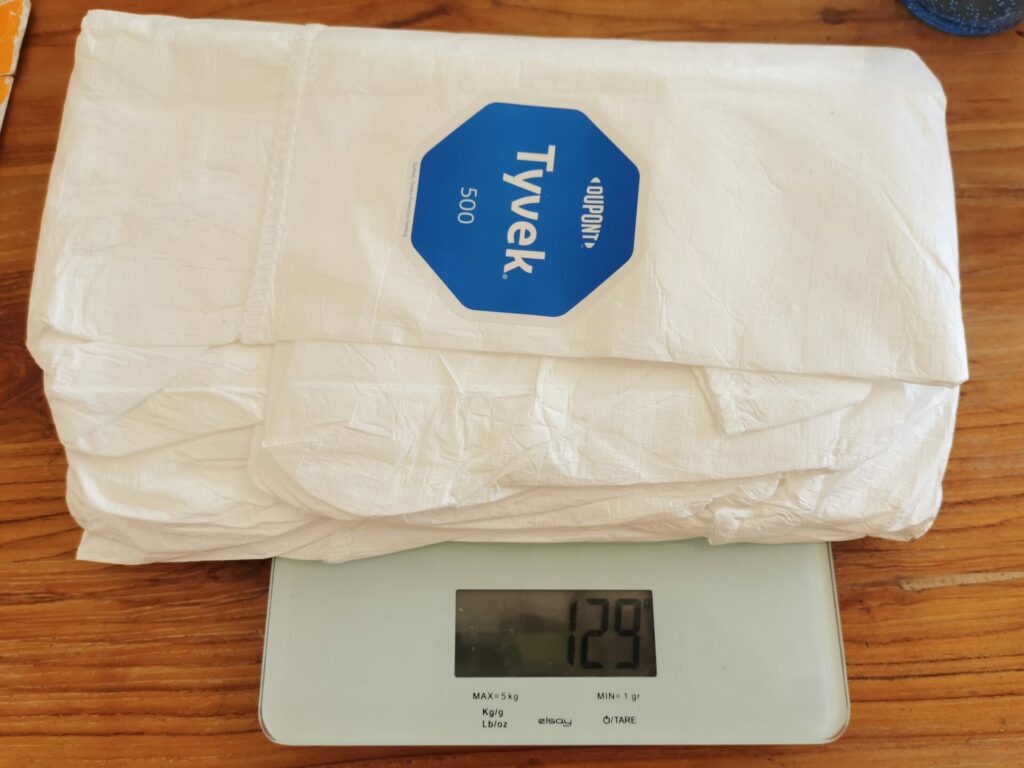
It makes a good windbreaker, helps staying warm, and brings full protection against sandstorms (with a buff and photochromic glasses). It’s also waterproof and can be used to pack your sleeping bag in case of rain. And of course a unique look. You can also get it in 2 pieces (slightly heavier) if you think you’ll need the jacket only sometimes (e.g. at night on the long stage).
I also had a pair of light socks (20 grams) to protect feet on the bivouac in case of blisters (but Celine found better).
Celine took an ultra-light Nike windbreaker (90gr), panties (30gr), a small Nike top (26gr but the buff was enough), and a mini-pair of socks (10 grams).
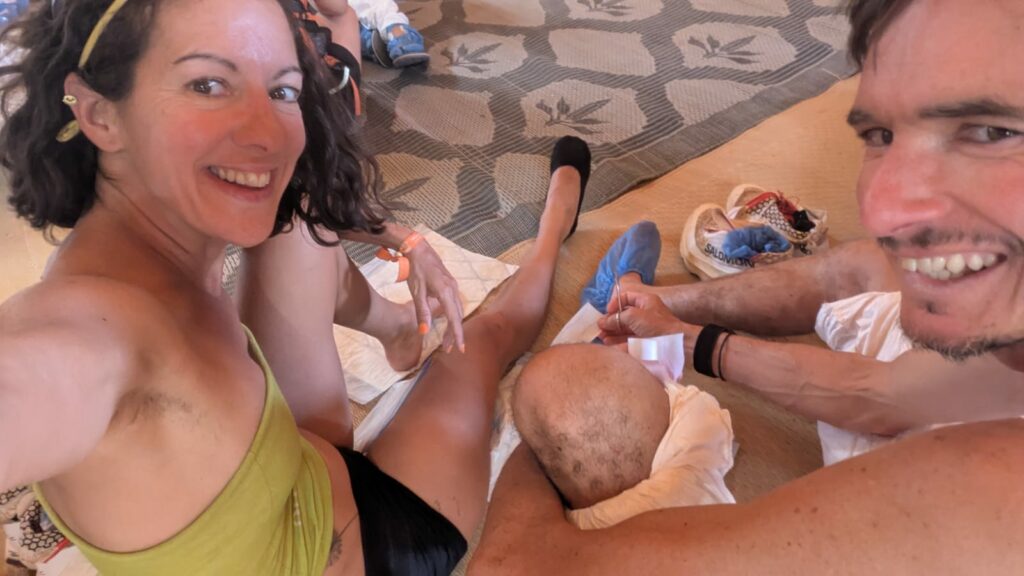
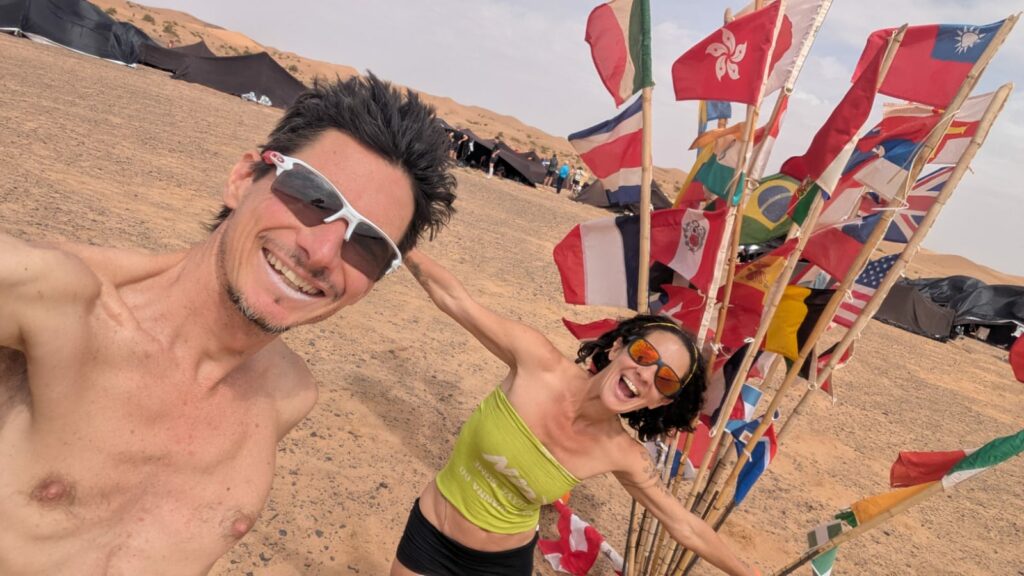
Conclusion
Everyone is different, what has worked for us may not work for you.
Make your own opinion and test everything, in race conditions as much as possible.
Do not hesitate to leave questions or comments.
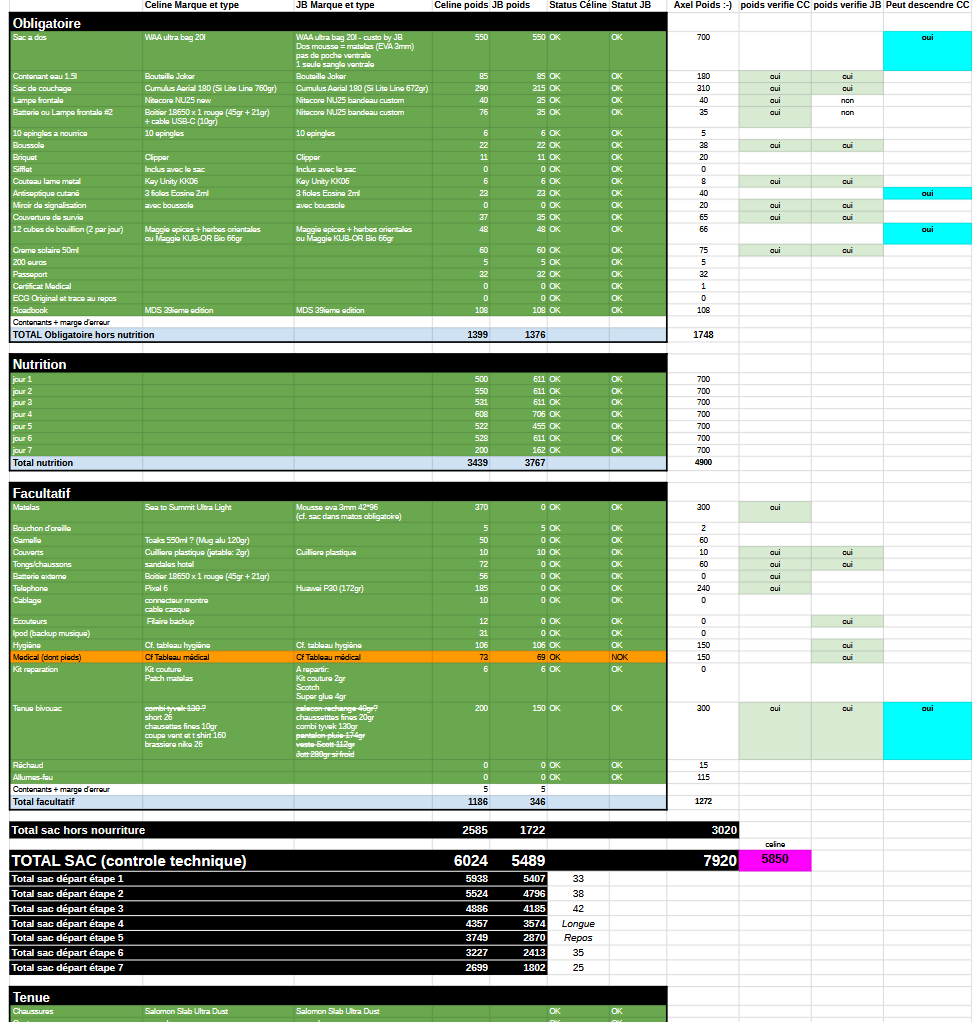
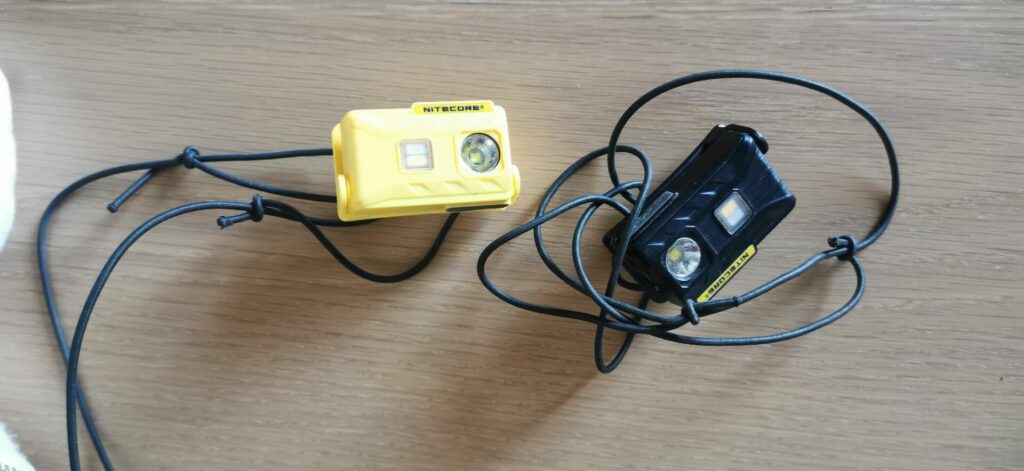
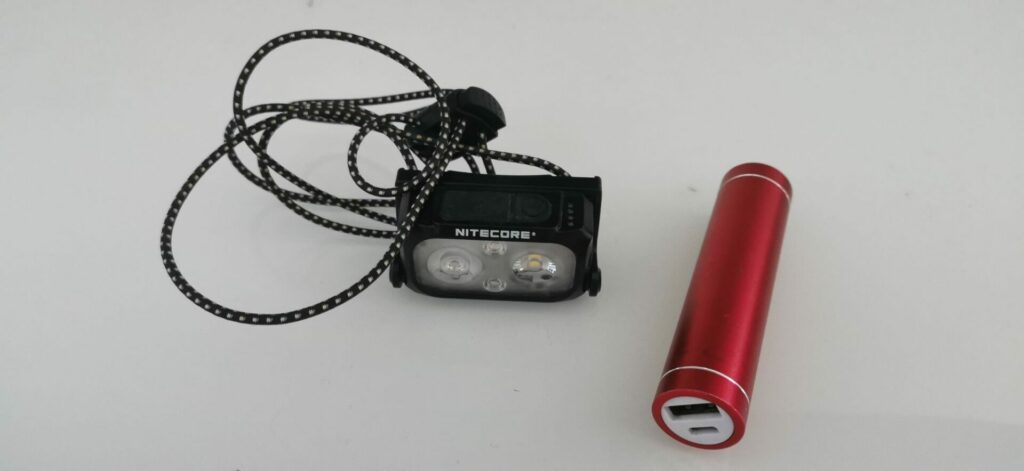
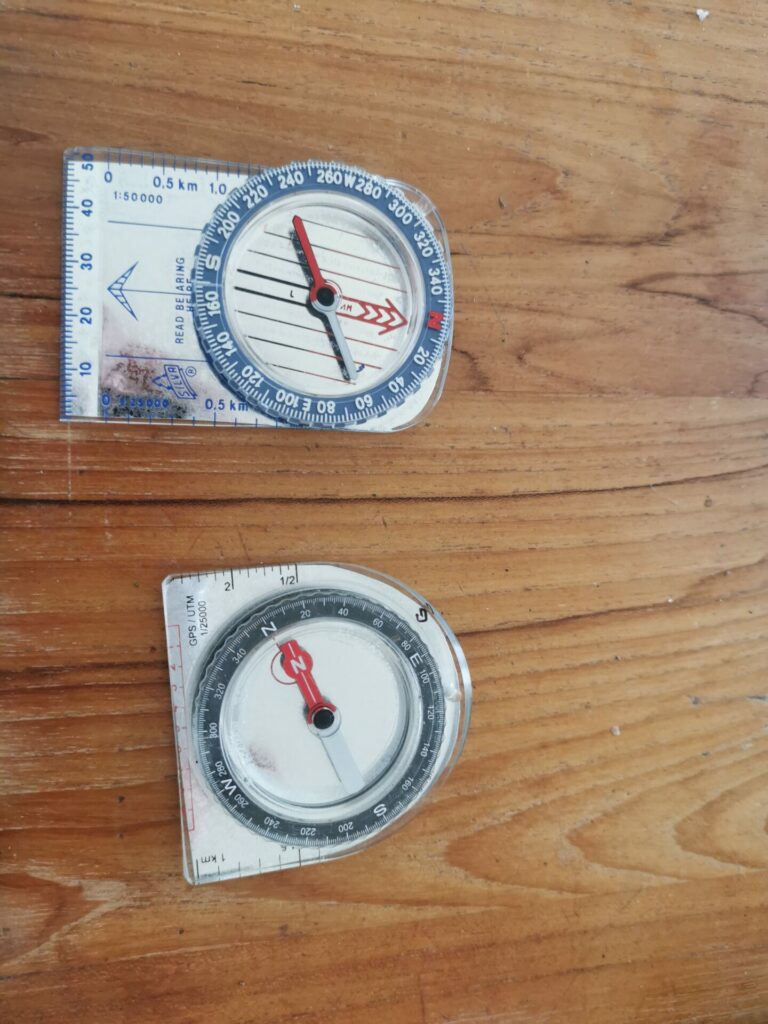
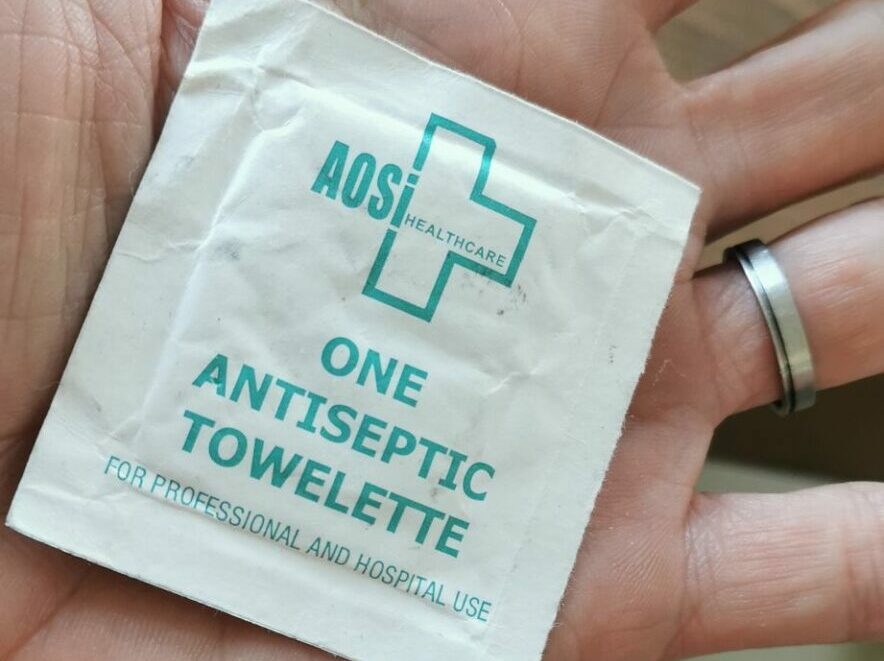
Vivek Joshipura
3 May 2025Hi
Thanks for sharing a detailed description of the experience as well as the kit. Really an awesome insight.
I was wondering if you could possibly share a version of spread sheet in English please?
That would be sincerely appreciated.
I am planning to run the MDS Legendary event in 2026 and would like to employ your spreadsheet as my baseline.
Many thanks in advance.
Regards
Vivek
J-B
3 May 2025Hi Vivek,
Thanks for the feedback.
Sorry but I don’t plan to translate the spreadsheet. I really don’t think there’s much work on your side to make it an English version (maybe with the help of AI).